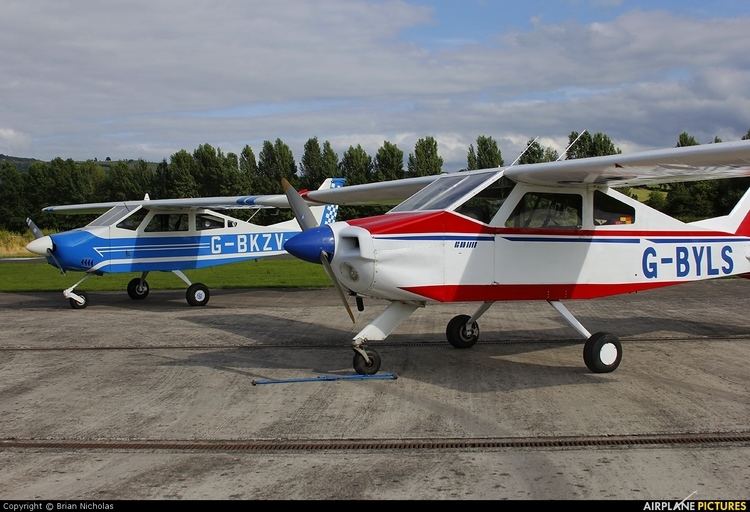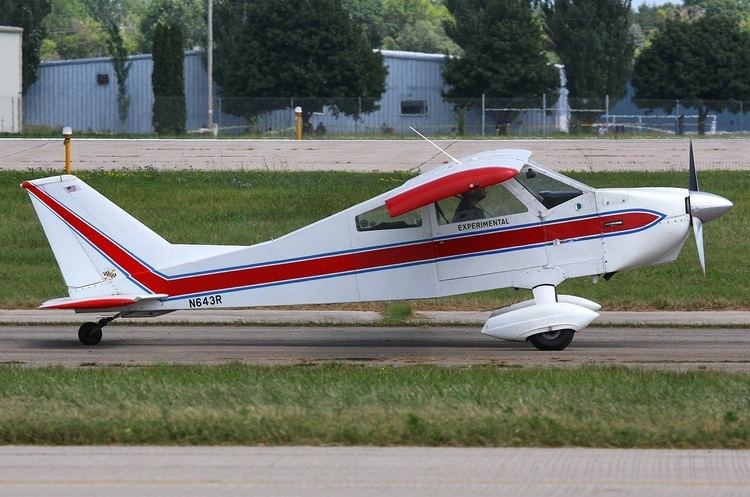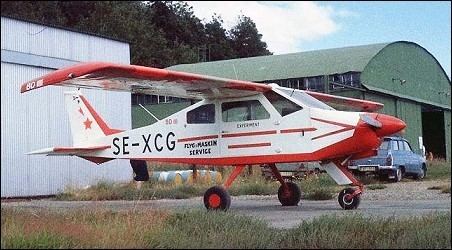Wingspan 7.8 m First flight 1968 | Range 1,450 km Manufacturer Bedecorp | |
 | ||
The Bede BD-4 is a light general aviation aircraft marketed in the United States for homebuilding since 1968. It was the first homebuilt aircraft to be offered in kit form. It remains one of the world's most popular homebuilts with thousands of plans issued and hundreds of versions completed to date.
Contents

Design and development

Based on previous work with innovative light aircraft, the BD-1 (eventually developed into the American Aviation AA-1 Yankee) and BD-2, Jim Bede designed the BD-4, the first real "kitplane" in the world. The design was based on a high-wing cantilever monoplane of conventional design, able to be fitted either with tailwheel or tricycle undercarriage, as the builder chooses. The builder was also able to choose between building a two-seat or four-seat version. Bede wrote a 165-page BD-4 builder's book, "Build Your Own Airplane", that is still available in 2012, that gives the amateur builder a good perspective on construction techniques.

The intention was to have people with little or no fabrication experience start with a set of comprehensive plans and work up to a bolt-together operation, with complex components provided from the factory. In order to simplify construction, there were few curved surfaces and most of the fuselage was made up of flat aluminum sheeting. The only major components with compound curves were the engine cowling and landing gear spats which were made of fiberglass. The fuselage is constructed of aluminum angle braces bolted together to form a truss frame.

An innovative feature was the wing structure, which employed a "panel-rib" constructed in sections consisting of a rib whose upper edge was extended horizontally to become one section of the wing surface. The wing was progressively built up by sliding these sections together over the tubular spar and fastening them together where they met. Although the original wing design was easy to build, the current BD-4B features a redesigned, more conventional, metal wing with a tubular spar bonded to honeycomb ribs.

One downside to the panel-rib construction was not noticed until the aircraft had been in service for some time. Because the panels were glued together, they formed a liquid-tight bond, unlike conventional systems using rivets. Instead of using a separate tank to hold fuel, builders simply drilled holes in the ribs to interconnect the sections to form a tank. In service, it was found that leaks inevitably developed due to problems like improper seals and natural flexing of the wing. BedeCorp later redesigned the wing to use a more conventional system with separate fuel tanks in the BD-4C.
Variants
Specifications (BD-4B)
Data from Kitplanes and The Incomplete Guide to Airfoil Usage
General characteristics
Performance
